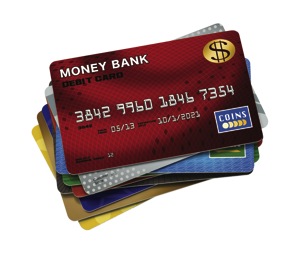
35 percent of Americans have a debt in collections according to a new study by The Urban Institute. This means people have not made payments on things like credit card debt, medical bills or even a parking ticket. This is a serious problem that shows how much financial distress Americans are under.
Now there may not be one in three people in financial distress. Millions have debt in collections they are not aware of. So the first thing everyone should do is get their free credit report at www.annualcreditreport.com. Review your report for any items in collections or any negative comments. These are summarized at the top of your credit report, so it’s pretty quick to determine if you have a problem to fix.
Where to get help
One place to look for free financial education is your local credit union. San Diego County Credit Union and Mission Federal Credit Union are two that I know of with free classes on budgeting and paying off debt.
Another resource I like is www.suzeorman.com. Everyone probably knows this personal finance guru from her TV shows and books. Her Web site has tons of free resources and information on paying off debt.
For those that are in way over their heads with credit card debt, then credit counseling may be your solution. You can find non-profit credit counseling companies at www.AICCCA.org or www.NFCC.org. Once you find a non-profit credit counseling company (and be sure they are non-profit), make an appointment to have your situation analyzed. They can put you in the appropriate program to get your financial life back on track.
You can also try to do this on your own if you think that’s the better path. Once you’ve acknowledged there’s a problem, it’s time to start paying that debt off. Here are the steps to do it:
1) Make a list of all your debts including balances, interest rates and minimum payments for each card.
2) Stop using your credit cards.
3) Choose a monthly budgeted amount to pay toward credit cards. The payment should be high enough to pay off the debt in no more than five years, and preferably no more than three years. Use the Payoff Calculator at www.creditcards.com to calculate the required monthly payment.
4) Make the minimum payments on all your credit cards with the lowest interest rates.
5) Use the rest of your budgeted amount to pay down the highest interest rate credit card. Once that highest interest rate card is paid off, move on to paying the next highest interest rate card. This is called a “debt snowball” method. Just search that term on the Internet to find a more detailed description of this process.
Be sure to track your progress!
Steve Doster is a Certified Financial Planner™ professional providing commission-free financial advice for do-it-yourself investors. You can reach Steve at Doster Financial Planning by phone 619-688-1192 or email steve@dosterfinancialplanning.com. You can also follow Steve on Facebook, Linked In, Twitter, or blog to get more personal finance advice and tips.











